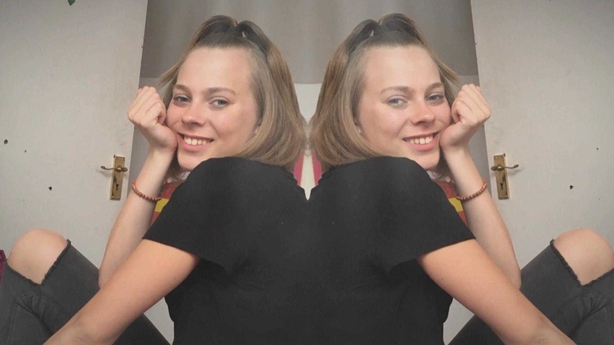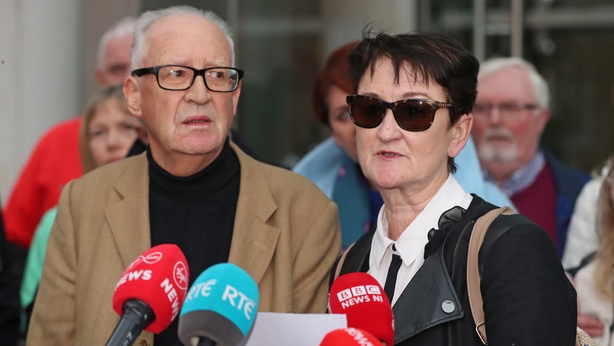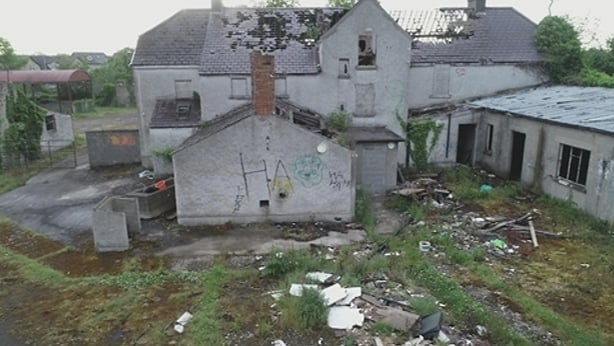Hoodies, backpacks, vaccinations, homework, cartoons, a walk in the local park and a girl who liked a boy. The mundane details of ordinary teenage lives were laid bare in the Central Criminal Court, making what happened on a sunny May evening in Lucan all the more shocking.
Why would two young teenage boys kill a 14-year-old girl they barely knew, in such a brutal way? How could they lie so vehemently and consistently about it? What did they think was going to happen afterwards? Those are questions for which we still have no real answers.
As court reporters, we are used to dealing with horror. The first case I had to cover on my return from maternity leave several years ago was the rape of a very young child. In order to cope, we separate out the horrific details and compartmentalise them in our minds. Often, the blackest of black humour helps us deal with our emotions.
This is all the more challenging when you are dealing with a crime for which there is no real motive or explanation. In the case of the murder of Ana Kriégel, it was more difficult than in any other trial.

For the first time in Ireland, two children were on trial for the murder of another child. And, unlike most other cases I've covered, the young accused in this case, were not children from dysfunctional families, they were not neglected by parents battling addiction, they did not have any obvious mental health problems.
Instead, they sat in the Central Criminal Court, flanked by their parents and in one case, their grandparents. Two ordinary looking teenage boys. One dark-haired, gangly and spotty. The other smaller, fair, baby-faced.
Sometimes they seemed almost oblivious or indifferent to what was going on. At other times, the taller boy clung to his mother or father, like a needy toddler. Towards the end, the smaller boy suffered a panic attack.
Through it all, Ana Kriégel's family sat at the side of the court, silently, with heart-breaking dignity.
Families of the bereaved are encouraged and expected to remain calm during such trials - not to shout out or do anything that would be seen as trying to influence a jury.
How difficult it must have been therefore for Ana Kriégel's mother and father as they listened to the details of every blow their daughter suffered, and the overwhelming evidence that one of the teenage boys sitting a few feet away from them, was responsible.
What self-control it must have taken to stay quiet, watching a teenage boy, being questioned about murder, calmly describe their dead daughter as "weird" and "slutty".

Ana's mother and father, Geraldine and Patrick, were among the last to talk to and to see their daughter before she left her home with one of the accused boys at 5pm on that Monday evening.
This meant that, unusually in a murder trial, they were among the very first witnesses. As a result, Ana came vividly into focus from the very beginning of the case, in a way that doesn't often happen.
This added to the pall of horror hanging over the courtroom. How could such a vibrant young life been taken so unnecessarily? For some of us in court, Ana came to dominate our thoughts on a daily basis.
The general sense of horror was accompanied by difficult working conditions. There seemed sometimes to be an air of suspicion in relation to the media, who were in court as the eyes and ears of the Irish public.
The public interest in knowing more about a case in which two children killed another child could not have been more obvious. But a deep and genuine concern that the two accused boys would be named on social media, coupled with some initial missteps and errors from members of the traditional media, led to a tense atmosphere.
Read more
The murder of Ana Kriégel - how the case was solved
If a case like this were to arise again in the future, it would benefit, in my view, from pre-trial discussions, involving the media, about potentially difficult issues.
The trial ended after seven weeks, with what seemed inevitable guilty verdicts but little resolution.
What did these two young boys think was going to happen after Ana's death? There seemed to be no concept of any consequences. The first boy didn't even bother to hide the damning evidence in a backpack at his home, linking him to the murder scene and to Ana's death.

The second boy went home afterwards to do his homework and watch his favourite cartoons. After his arrest, he eagerly volunteered to gardaí his thoughts on Ana - how she wore, in his view, "slutty" clothes, how she was seen as someone it would not be a good idea to be around. Misrepresentations of a little girl, her mother said, by a "twisted mind with tainted eyes".
CCTV footage showed the two boys walking home from school together a few hours before the murder. When questioned initially, they both had similar stories about their movements with Ana in the park. There was evidence of planning and premeditation, but according to the senior investigating officer, Inspector Mark O'Neill, there is still no clear explanation.
The only sliver of a reason may be the "vast amount" of porn found on two mobile phones in the first boy's bedroom. In all there were more than 12,000 images, most of them pornographic.
The prosecution also tried to introduce a video of one of the boys trying to smash a concrete block with a homemade weapon, filmed by the other boy. And there was a suggestion in a garda interview of an interest in satanism, on the part of the second accused boy, denied by him and dismissed by the trial judge as irrelevant to the jury's deliberations.
Since their convictions, both boys have given new accounts to medical professionals. They are in dispute about key elements of what happened. And the second boy does not accept the verdict of the jury.
His appeal may be heard towards the end of 2020, but it's unlikely to bring many answers.


